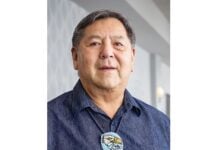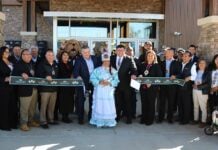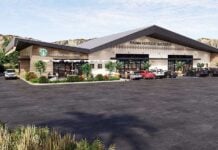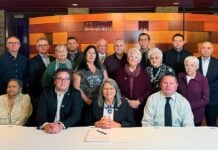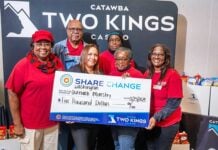Claremont Graduate University (CGU) recently announced one of the largest gifts in its nearly 100-year history – $14 million – from the San Manuel Band of Mission Indians in Highland, CA, to purchase the Huntley Bookstore building at the heart of The Claremont Colleges, a unique group of institutions in U.S. higher education.
An iconic example of mid-20th century architecture, the building will serve as the home of the Yuhaaviatam Center for Health Studies, an innovative, multi-disciplinary health research center rooted in a health and well-being initiative launched more than a year ago.
Bearing a name that means “People of the Pines” (which refers to the original inhabitants of the area who are the ancestors of the San Manuel Band of Mission Indians), the center will facilitate the collaboration among CGU researchers, scientists, and outside partners to address health and well-being challenges especially prevalent in underserved, vulnerable populations of the Inland Empire and Indian Country.
Meeting a Need for Proactive Health Research
CGU is located on the threshold of the Inland Empire, a region with a high prevalence of chronic disease where many underserved residents lack sufficient health coverage or awareness of the benefits of wellness and preventative care.
When residents need a doctor, they face challenges to access due to an overstressed healthcare system. Such underserved populations include Native American communities, which historically have higher rates of diabetes, obesity, heart disease, mental health issues, lack of overall wellbeing, and other chronic conditions.
San Manuel’s collaboration with CGU demonstrates how partnerships can provide a strong and effective framework to address longstanding social inequities. Discussion of this historic gift began in 2019 but was delayed due to the COVID-19 pandemic crisis, and it comes at a time when such partnerships are needed to produce even more meaningful responses to public health challenges.
CGU President Len Jessup said the partnership between CGU and the tribe will make it possible to create “powerful new collaborations on preventive and proactive responses to the kinds of chronic illness affecting so many today.”
Future research at the center, he added, will address “many of the ‘underlying conditions’ we’ve been hearing about during the pandemic. It’s our hope to eventually produce the kinds of research at this center that will help prepare everyone, especially our most vulnerable populations, for the challenges of another global crisis.”
Integrating Many Disciplines Under One Roof
Today, scholars across CGU’s seven schools and divisions are conducting innovative research onproactive and behavioral approaches to disease prevention and designing health-driventechnologies improve accessibility to health management programs by underserved populations.
These efforts along with those of outside partners will come together in the Huntley Bookstorebuilding, a 23,000 square-foot facility, which has served as The Claremont Colleges’ centralbookstore for 50 years. The School of Community & Global Health will serve as the anchor tenant.
“Real, substantial breakthroughs happen when people from many disciplines come together andcollaborate. That’s the hallmark of our transdisciplinary philosophy,” Jessup explained, “and thepurchase of the Huntley makes it possible to create such a space for that kind of engagement onour campus.”
San Manuel’s partnership with CGU builds on a relationship with the university dating to 2006 andthe establishment of the university’s Tribal Administration Program. That program providesintensive training in areas of management as related to tribal governance and administration.
The Huntley building also will serve as that program’s home and the location of an envisioned tribal community governance and jurisdiction center focused on health, well-being, and other issues affecting Indian Country.
Improving Lives in the IE and Beyond
Plans for the center’s collaborative environment include bringing together university scholars, outside partners, and leaders of outreach programs focused on integrative health and advanced research to improve healthcare for vulnerable populations.
The focus won’t be on the Inland Empire alone but also extend to the L.A. Basin, which is home to the largest population of Native Americans found in an urban area of the U.S. The tribe understands the obstacles facing many of the region’s underserved communities because of its own past economic and health-related struggles.
“In our role as stewards of our ancestral lands, we support our neighboring communities, in addition to our Tribe. For generations, low-income communities and underserved populations have needed quality healthcare. Our gift is an investment in future healthier communities and one we are happy to make,” said San Manuel Tribal Chair Ken Ramirez.
Deron Marquez is the former San Manuel Chair, a CGU alumnus, and member of the university’s Board of Trustees. He believes that the center’s work will resonate far beyond Southern California.
“The types of health and well-being research that will be tackled by the center are relevant to the needs and situations of so many today. Its benefits will ripple out,” Marquez said. “To bring together the university’s pioneering approach to research with San Manuel’s philanthropic vision is truly exciting.”








